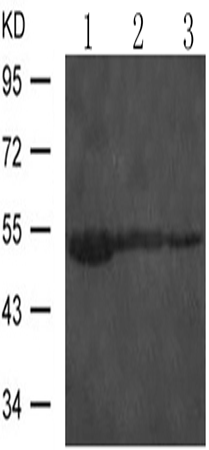|
Background: |
GABA (γ-aminobutyric acid) is the primary inhibitory neurotransmitter in the central nervous system and interacts with three different receptors: GABA(A), GABA(B) and GABA(C) receptor. The ionotropic GABA(A) and GABA(C) receptors are ligand-gated ion channels that produce fast inhibitory synaptic transmission. In contrast, the metabotropic GABA(B) receptor is coupled to G proteins that modulate slow inhibitory synaptic transmission. Functional GABA(B) receptors form heterodimers of GABA(B)R1 and GABA(B)R2 where GABA(B)R1 binds the ligand and GABA(B)R2 is the primary G protein contact site. Two isoforms of GABA(B)R1 have been cloned: GABA(B)R1a is a 130 kD protein and GABA(B)R1b is a 95 kD protein. G proteins subsequently inhibit adenyl cylase activity and modulate inositol phospholipid hydrolysis. GABA(B) receptors have both pre- and postsynaptic inhibitions: presynaptic GABA(B) receptors inhibit neurotransmitter release through suppression of high threshold calcium channels, while postsynaptic GABA(B) receptors inhibit through coupled activation of inwardly rectifying potassium channels. In addition to synaptic inhibition, GABA(B) receptors may also be involved in hippocampal long-term potentiation, slow wave sleep and muscle relaxation. |
|
Applications: |
WB |
|
Name of antibody: |
Gabra3 |
|
Immunogen: |
Synthetic peptide of Rat Gabra3 |
|
Full name: |
gamma-aminobutyric acid (GABA) A receptor, alpha 3 |
|
SwissProt: |
P20236 |
|
WB Predicted band size: |
55 kDa |
|
WB Positive control: |
Rat brain, mouse brain tissue and C6 cells |
|
WB Recommended dilution: |
500-1000 |

 購物車
購物車 幫助
幫助
 021-54845833/15800441009
021-54845833/15800441009
